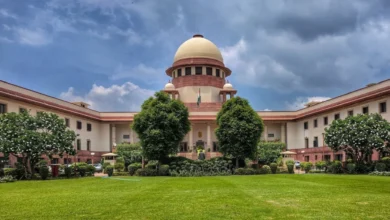In Compassionate Appointment, Employer can give Lower Scale Job to Dependent, if ineligible for particular Post: High Court

A single-judge bench of the Patna High Court, presided over by Justice Purnendu Singh, delivered a significant ruling on compassionate appointments. The Court held that in cases of compassionate appointments, the employer must explore alternative posts instead of rigidly adhering to the eligibility criteria for specific positions.
Background Facts
The petitioner, a resident of Banka, Bihar, is the widow of Late Guddu Kumar, a member of the Central Industrial Security Force (CISF), who passed away on October 10, 2019, while still in active service. After her husband’s death, the petitioner became the sole caregiver for her two young children and elderly in-laws, without a source of income. On November 7, 2019, she applied for a compassionate appointment as the dependent of a deceased government employee. She met the educational qualifications and other requirements for a Group ‘C’ post, but her application was repeatedly rejected by CISF officials. The rejection was based on her height, which was 142.5 cm, below the required minimum of 155 cm for OBC candidates. Despite a relaxation to 147.5 cm being applicable, the authorities turned down her application.
Aggrieved by this decision, the petitioner approached the Patna High Court, seeking to have the rejection order overturned, requesting an appointment on compassionate grounds, and claiming damages for the delays and hardships caused by the respondents’ actions.
The petitioner contended that the authorities did not consider offering her alternative employment, such as a Group ‘D’ post, which does not have stringent physical requirements. She also pointed to the Office Memorandum dated April 3, 2012, which allows flexibility in offering posts to the dependents of deceased employees under compassionate grounds. The respondents maintained that her application for a Group ‘C’ post was rejected solely due to her failure to meet the height requirement, even with the OBC relaxation.
Court’s Findings
The court emphasized that the purpose of compassionate appointments is to provide immediate assistance to the families of deceased government employees who face financial hardship due to the sudden loss of the family’s breadwinner. The Court noted that the petitioner had applied promptly for a compassionate appointment after her husband’s death but faced significant delays and repeated rejections.
The Court observed that the authorities concentrated on the petitioner’s failure to meet the height requirement for a Group ‘C’ position, rather than considering her for other suitable positions, such as Group ‘D’ posts, for which she was willing to apply. The Court cited the Office Memorandum dated April 3, 2012, which allows flexibility in considering Group ‘D’ posts for the dependents of deceased employees.
The Court also referred to the Supreme Court ruling in State of West Bengal v. Debabrata Tiwari & Ors., which held that compassionate appointments are a unique mechanism designed to address a family’s sudden financial crisis caused by the death of the breadwinner. Such appointments should be granted promptly and not viewed as a vested right. Additionally, in Jagdish Prasad v. State of Bihar, the Supreme Court reaffirmed that the objective of compassionate appointments is to alleviate the immediate hardship caused to the family by the sudden demise of the earning member.
The Court further noted that the authorities had failed to consider the petitioner’s financial hardship and emphasized that compassionate appointment policies should not be applied rigidly but should focus on assisting families in distress.
Court’s Order
The Court set aside the rejection order issued on January 4, 2023, and directed the authorities to reconsider the petitioner’s case. The Court also instructed the authorities to evaluate the petitioner’s qualifications for any suitable Group ‘D’ position. With these observations, the writ petition was disposed of.
